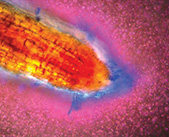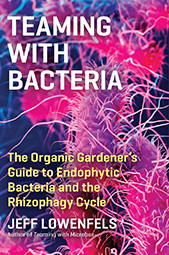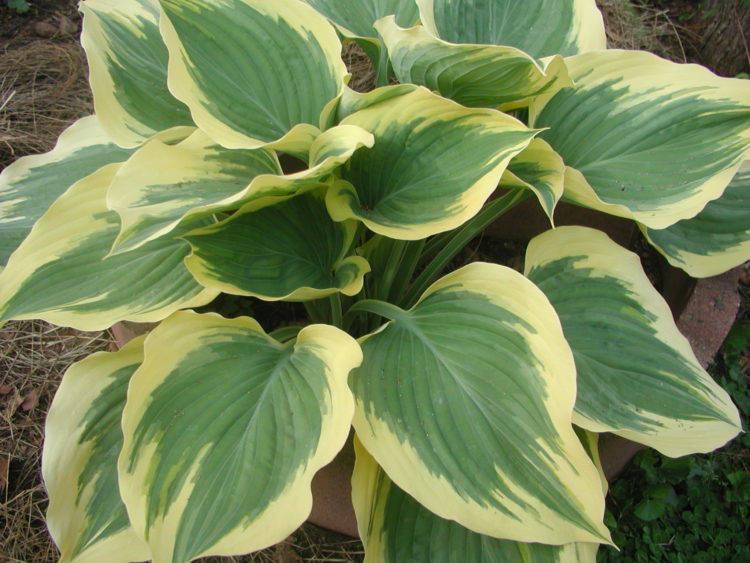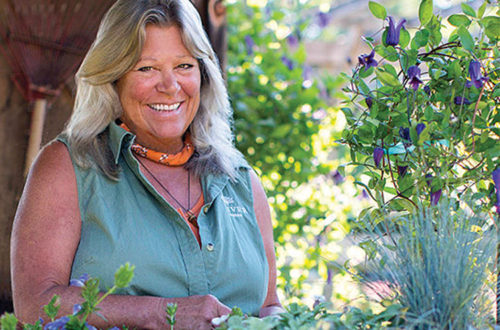Jeff Lowenfels has described writing a book as “going down a rabbit hole.” That’s also a fairly apt description of reading one of his books.
I’ve read the entire Lord of the Roots Trilogy: Teaming With Microbes, Teaming With Nutrients and Teaming With Fungi. But, now that we have Teaming With Bacteria, I guess we have to call it the “Teaming Cycle.”
In any case it’s another rabbit hole to explore, which I relish. I’m always a slightly different person after reading one of Jeff’s books. I can’t say I remember all the details but I always discover a new way of looking at things.
For those into the soil food web, Jeff told me that he recommends reading Teaming with Bacteria (his fourth book) after reading Teaming with Microbes (his second book).
There’s a good amount of science packed into his books but he covers it in a lighthearted and sometimes humorous way. The point is not to memorize intricate details (you won’t be quizzed) but rather to let it wash over you as you absorb relevant concepts.
Gardeners already know that healthy soil teems not only with earthworms and insects but also a wide variety of fungi and microorganisms. Now, Lowenfels introduces us to a new realm of soil science … bacteria.

A diverse mix of exudates attracts an equally diverse mix of bacteria to the rhizosphere around plant roots and root hairs.
The Rhizophagy Cycle
A paper by Dr. James White in the Plant Biology Dept. at Rutgers University describes it this way, “In the rhizophagy cycle symbiotic microbes (often seed transmitted bacteria) alternate between an intracellular/endophytic phase and a free-living soil phase. We hypothesize that microbes acquire soil nutrients in the free-living soil phase and that those nutrients are extracted from microbes oxidatively in the intracellular/endophytic phase.” Dr. White specializes in the symbiosis of endophytic microbes.
It’s an oversimplification, but here’s the way I look at it: Endophytic bacteria have nutrients that are beneficial to plants and, as a result, plants have figured out how to encourage (or farm) them. Via root tip meristem cells, the bacteria enter the outer area (periplasmic spaces) of roots where their cell walls are stripped off and used as food. It looks like plants may also be scavenging nitrogen.
Later, the bacteria are encouraged to exit through root hairs back into the soil where they regrow their cell walls. The whole process, known as the Rhizophagy Cycle, takes a couple of days.
The plants figured this out eons ago, of course, but we humans are just beginning to understand the process. Lowenfels explains why it’s relevant to organic gardeners, small-scale farmers and cannabis growers.
Jeff grew up in Scarsdale, NY, where he tended to his father’s 8-acre gentleman’s farm. He studied geology at Harvard College and law at Northeastern University.
He is the longest running garden columnist in North America, writing for the Anchorage Daily News. He was inducted into the Garden Writers of America’s (now known as Garden Comm) Hall of Fame in 2004.
– Will Rowlands

Teaming With Bacteria –
The Organic Gardener’s Guide to Endophytic Bacteria and the Rhizophagy Cycle
172 pages, 6” × 9”
Hardback $25, Kindle $12
ISBN 9781643261393
Timber Press – timberpress.com





